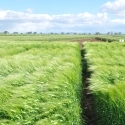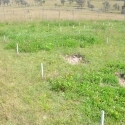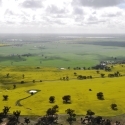07 Dec 2016
Nitrogen performance indicators for Australian grain farms
Presented at the International Nitrogen Conference, Melbourne, Australia
 Wheat crop nearing harvest
Wheat crop nearing harvest
A survey was undertaken of 118 growers covering 474 fields over five years across south-eastern Australia. Crop type, grain and hay yield, residue management and fertilizer use were recorded and used to derive N partial nutrient balance (PNB) and N partial factor productivity (PFP). Estimates of the amount of N derived from biological fixation were made for pulse crops. Fertilizer N rates were higher for the higher rainfall regions, averaging 39 kg N/ha for cereals and 56 kg N/ha for oilseeds. Biological nitrogen fixation (BNF) was estimated for the fields based on legume seed or estimated pasture yields and BNF accounted for 16%, 29%, 14% and 50% of the N input for the High Rainfall Zone, Mallee, Southern New South Wales and Wimmera respectively. The regional median values for both PNB and PFP were higher than the mean values, indicating that there were relatively more high values in all regional data sets. Median PNB was less than 1 of all regions, but there were over 10% of fields in the High Rainfall Zone and the Mallee where PNB was more than 2, and the mean N deficit was highest in those regions at 13 kg N/ha/y and 10 kg N/ha/y respectively. PFP values were highest in Mallee, possibly a consequence of the inherently lower soil N status there. These data demonstrate that understanding the inherent variability in nutrient performance indictors, and also linking soil fertility assessments, is important in developing strategies to improve nutrient management.
A copy of the paper and presentation may be downloaded here.
Additional Resources
Paper presented at the International Nitrogen ConferenceSize: 0.27 MB
Presentation at the International Nitrogen ConferenceSize: 8.19 MB




